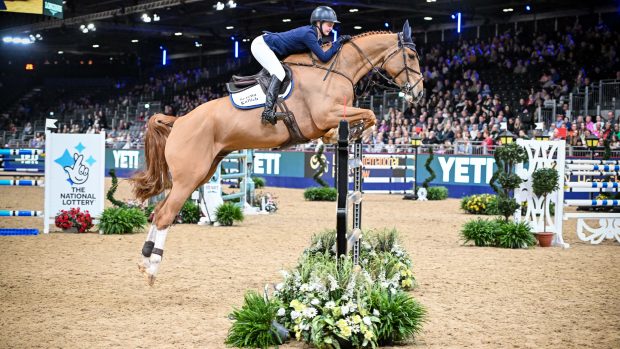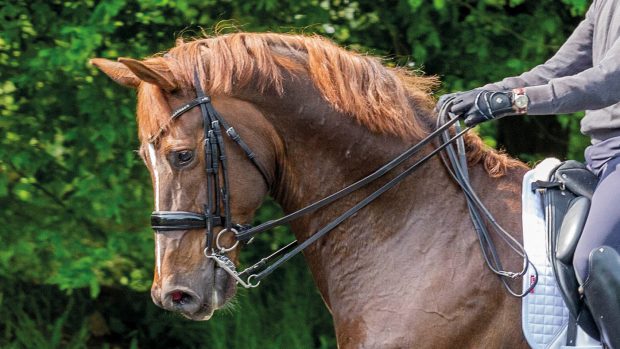According to Richard Ramsay, the decision on when to introduce a double bridle depends on a horse’s way of going, rather than its age. “A horse must first be going forwards properly, accepting a snaffle bridle and engaged behind,” says the showman renowned for his horses’ lightness and self-carriage.
“Only then would I introduce a double bridle or pelham. I never put one on until I’m totally happy with the way the horse goes in a snaffle, which has little to do with age.”
Richard, who is a BHSI, points out that basic schooling should be the same whatever the horse’s eventual job. “It might go off at a tangent to become a dressage horse, show horse or eventer, but the basics must be the same: it must go freely forwards and straight.”
Once the horse is established, it will work in a snaffle at home and rarely go in a double except at shows. There are many variations within the double bridle, so before he decides which type to use Richard analyses the conformation of the horse’s mouth and way of going.
“I look at the length of the jaw, because some animals, especially Thoroughbreds and ponies, have tiny mouths and it can be difficult or even impossible to fit a double.
“You also need to look at how low the molars are, while with geldings, the tushes are not always in the ‘right’ place. It’s vital to make sure the teeth are checked regularly by a good equine dentist.” he says.
“Some horses have big, fleshy tongues and, in that case, I would perhaps use an arched mouth Weymouth or one with a higher port to make more room for the tongue.”
The length and type of cheekpiece add another dimension. “Some horses go better with a sliding cheek, others with a fixed cheek,” says Richard. “The horse who is naturally light or tends to come behind the bit would usually be happier with a fixed cheek, while a sliding cheek would be better for one who is inclined to lean.” Similarly, he would opt for a loose ring bradoon for a horse who needed more “play” on the mouthpiece and an eggbutt for one who responded better to a mouthpiece which stayed relatively still.
The length of the curb cheekpiece affects the potential leverage. “Sometimes you arrive to judge, see something with a6in cheekpiece and wonder what it’s going to do,” he says.
“A horse is only as good as its rider and you have to understand the basics of bitting and the basics of schooling. But if you have a horse that gets clever in the ring and says ‘I’m galloping whether you like it or not,’ it’s sometimes better to go into a slightly sharper bit which it respects than to hang on to it, which would make the horse worse.”
The “standard” measurement for cheekpieces is that the overall length of each one equals the width of the mouthpiece. Richard finds that relatively short cheekpieces – often called Tom Thumbs – are particularly useful for ponies with small mouths.
The type of curb chain used is also important. “A horse who is natural in its carriage and light in its mouth is sometimes better with an elastic one,” says Richard. “You have to be flexible in your choice and work out what suits the individual.”
Richard says that some horses go better with bits which have a copper content than with those made from stainless steel, as copper adds “warmth” and encourages salivation. For dressage, all parts of the bit within the horse’s mouth must be made from the same material, so Weymouth sets made from Aurigan or Kangaroo metal comply with the rules.
Fitting a double bridle
As a general guideline for fitting, Richard advises that the bradoon should fit snugly into the corners of the mouth without pulling up the lips.
“With the Weymouth, the old saying was that it should be 1in above the tushes in a gelding and 2in above the corner teeth in a mare,” he says. “Precise fitting depends on the length of the horse’s jaw, but those guidelines are still useful.”
Richard likes the curb chain to come into play when the curb cheekpieces are drawn back to 45 degrees and warns against having it too loose. “You often see horses where the Weymouth comes right round to 180 degrees, but if the curb chain is fitted correctly you can ride ona very light curb rein.
“What you want is for the horse to flex and relax its jaw. When you’ve fastened the curb chain, check both sides to make sure it isn’t twisted.”




